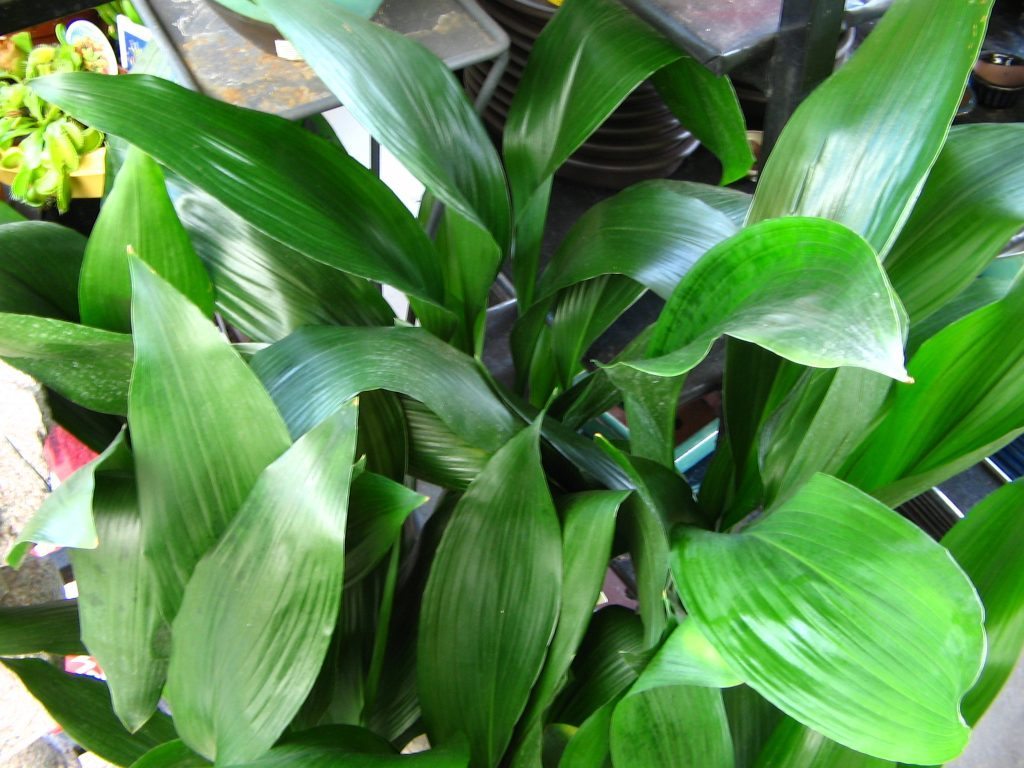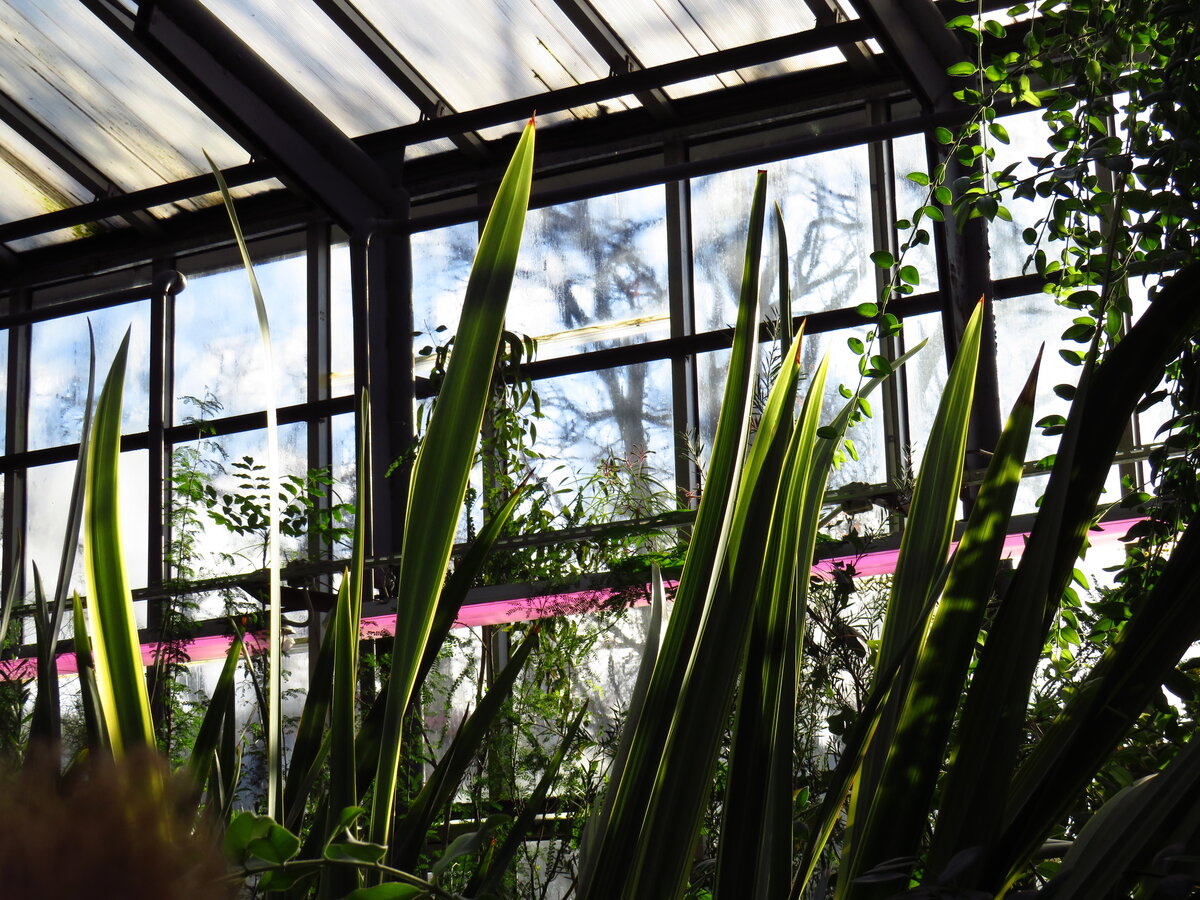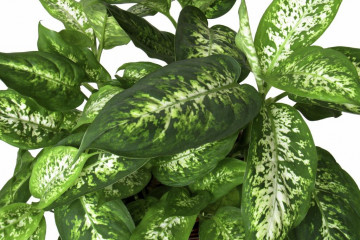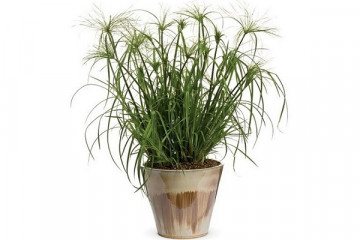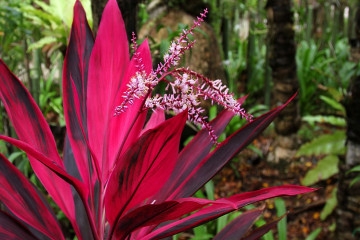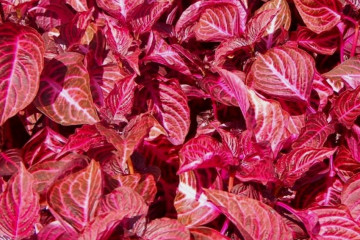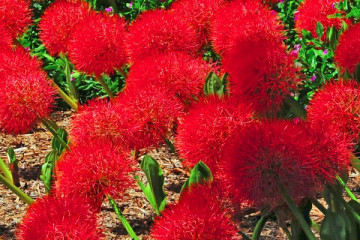Aspidistra flower - home care
Content:
Perennial evergreens - home decoration. The flower of aspidistra - a modest and noble houseplant - deserves the care and attention of florists.
What does an aspidistra look like, which family does it belong to
An interesting translation in the name of the flower: aspidis - snake, tra - pointer. It was believed that the flower, by trembling leaves, indicated a reptile, when it, crawling, lightly touched the plant.
Another version of the origin of the name is the kind of roots. Flexible and sinuous, they are intertwined like a ball of snakes. Although more positive people call the plant a "friendly family" for the leaves growing in a tight bunch.
Mystery and magic surround the herbaceous culture of the Asparagaceae family. In its natural environment, it grows on the Japanese islands, in the countries of Asia.
Flower lovers are captivated by how attractive aspidistra looks - it is a bush of wide and long graceful leaves. There are no stems at all. The glossy leaf of aspidistra, as if covered with a wax coating, reaches 80 cm in length, 15 cm in diameter. The color is juicy green with light streaks.
Popular varieties
In the scientific literature, a description of more than 100 species of aspidistra is given. 6-8 varieties are suitable for potting.
The most common:
High (aspidistra elatior). An unpretentious flower is a godsend for inattentive, forgetful people. Aspidistra high tolerates partial shade, irregular watering, so a bush up to 80 cm is often located in public institutions. Varieties have been obtained by selection:
- Variegata (bright green leaf with whitish stripes),
- Blume (solid emerald color),
- Snow Cap (green at the base of the leaf turns white towards the end).
An interesting compact bush of the Milky Way aspidistra - the Milky Way. On the sheets, specks are chaotically scattered, they remind many of the starry sky - hence the poetic name.
Other varieties are also known:
- Attenuata (a. Attenuata). The plant came to home indoor flower gardens from the forests of Taiwan. Aspidistra attenuate throws out stable tall sheets of a noble green color. Once a year, there are single “bells” of a pale green hue.
- Oblancefolia (a. oblanceifolia). It is characterized by many narrow mottled leaves. The flowers look like small stars.
- Sichuan (a. Sichuanensis). The "guest" was brought from the mountains of China. There it grew at an altitude of over 1000 meters above sea level. Single erect leaves grow up to 50-60 cm.
Aspidistra: home care
Aspidistra is a flower that is distinguished by its health at the genetic level. The plant forgives flower growers some of the mistakes in inspection. The aspidistra flower at home requires minimal maintenance.
Temperature
Readings on a thermometer all year round are permissible +15 ° C. But you should not go below this parameter during the growing season. When the air warms up above +20 ° C, it is necessary to increase the humidity by spraying.
Lighting
Plants that emerged from bamboo thickets easily tolerate a lack of sunlight.Therefore, tubs and pots with flowers are often placed in dark corners of the premises. The exception is "striped" varieties - streaks with a lack of illumination can disappear.
Watering
Moisten the plant as needed - monitor the state of the topsoil. Irrigate when it is 2/3 dry (check with a toothpick, or immerse a finger in the ground).
Excessive watering affects flower growth worse than some lack of moisture. In the heat, a settled liquid is poured under the bush 1-2 times a week, in winter - 1 time in 10 days, or the amount of water is reduced.
Spraying
The wide leaves of the aspidistra collect a lot of dust. To prevent the plant from suffering, it is sprayed or given a warm shower once a week. Dirty stains are removed with a sponge.
Humidity
At stable temperatures above +20 ° C, gardeners take care of increasing air humidity. Open containers with water are placed next to the plant, or sprayed from a spray bottle.
Priming
The plant in the descriptions is presented as not demanding on the soil. But in a closed container of a flower pot, the substrate is quickly depleted, so responsible color lovers take care of the balanced composition of the soil: for 1 part of the sand, they take 2 parts of peat and humus.
Air permeability is increased by coarse-grained fragments. The result is more lush plants.
Top dressing
The active vegetative phase of an evergreen plant is considered to be from March to September, the culture is fed with nitrogenous compounds. Liquid fertilizers ("Uniflor") give half the dose recommended for other flowers. It is better not to use granules and fluorides.
The frequency of feeding depends on the location: in shaded places - once every 3 months, in illuminated places - once every 4 weeks.
Features of care in winter, dormant period
The plant is not deciduous, but the winter time is considered to be its dormant period. Reduce watering and feeding, take out into a cool room. If this is not possible, they are more often sprayed on the sheet, increase the humidity, protect it from drafts and heating batteries.
When and how it blooms
Many cultivars show how aspidistra blooms in the middle of winter or early spring. Red, white and pale purple flowers delight the owners for a very short time - one day.
The flowers are star-shaped or bell-shaped. Aspidistra shows sporadic flowering. Small flowers up to 2.5 cm in diameter emerge from the rhizome. From them, a round or pear-like fruit is obtained, inside which one seed ripens.
Pruning
The aspidistra plant develops slowly - 2-3 leaves are added per year. It grows in greenhouses for up to 10 years, and in its natural habitat it is considered a long-liver - some species live up to 100 years.
To rejuvenate a home flower bush, it is periodically examined, dried and diseased leaves are cut to the very base. This restores the plant's decorative effect and stimulates the growth of young leaves.
How aspidistra reproduces
A simple breeding method is the spring division of the bush. The plant is pulled out of the pot, rotten roots are removed. The rhizome is divided into several fragments so that each has 4-5 leaves. The roots are sprinkled with wood ash, transplanted into new containers. The plant is covered with a transparent film, removed to a dark, cool place. When the first new leaf appears, the shelter is removed.
It is easy to propagate the aspidistra leaf. It is cut off at the base, placed in a bottle of water, to which a growth stimulant is added. The neck is sealed with adhesive tape to prevent air from entering, placed in the light in a warm place. When the roots appear, they are transplanted into dishes.
Transfer
In April-May, every 3 years, the flower is transplanted into a new container.In diameter, it should exceed the previous one by 3-5 cm.
Expanded clay, pieces of foam plastic, soil are poured at the bottom. The aspidistra is abundantly moistened to make it easier to pull out of the pot, transferred to another dish. Earth is added along the edges, tamped, watered. In total, the plant undergoes 4-5 transplants during its life.
Diseases and pests
The plant gets fungal and viral disease from dampness and poor drainage. Florists use leaf fungicides and a manganese solution to disinfect the soil, in which worms and nematodes could appear.
External pests (spider mites, palm scale) are washed off with soapy water, collected by hand. If you do not take action, they will prevent the plant from blooming.
Aspiditra is not interesting for its colorful flowers - its attractiveness is in the leaves. The plant does not have stems, but it grows a beautiful green mass. It is simple to take care of the bush: watering and feeding are rare, the temperature regime is moderate. It is important to wash off dust from wide leaves in time.
